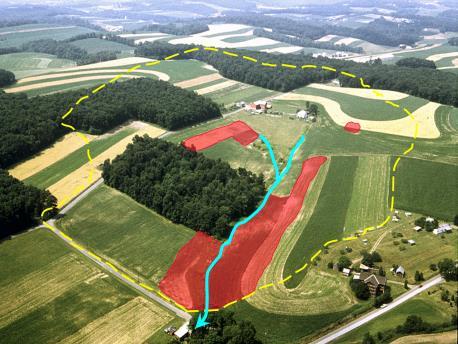This webinar discusses why compaction is a cropping challenge, considers how the application of manure can lead to it, and the effects of manure on soil resiliency. This presentation was originally broadcast on April 19, 2024. Continue reading “Optimizing Agricultural Practices: Balancing Manure Use and Minimizing Compaction”
Going the distance: considerations for the use of manure pipelines
In this webinar, presenters share tips on what to look for, how to monitor your system, and what maintenance is needed for manure pipelines. This presentation was originally broadcast on February 18, 2022. Continue reading “Going the distance: considerations for the use of manure pipelines”
Phosphorus Indices: Taking Stock of Where We Are and Where We Need to Be
![]() Waste to Worth home | More proceedings….
Waste to Worth home | More proceedings….
Abstract
The inconsistency among P Indices in terms of level of detail and scientific underpinnings among states, as well as in recommendations and interpretations based on site risk, prompted a review and possible revision of the 590 Standard and P-Indexing approach. The need for revision has been heightened by a slower than expected decrease in P-related water quality impairment and, in some cases, an increase in soil P to levels several fold greater than agronomic optimum due to the inability of the P Index to prevent the continued over-application of P to soils. While the basic scientific foundations of the P-Indexing approach are sound, these concerns are real. In this presentation, we propose the use of lower and upper boundaries of P Index use and describe an approach to evaluate individual State P Indices.

An aerial shot of the FD-36 watershed in south-central Pennsylvania (defined by the dashed white line), where soil chemistry, hydrologic, and agronomic research by USDA–ARS at University Park and Klingerstown locations identified areas of the watershed (in red) at great risk of contributing phosphorus to the stream (the blue line). This research was key to framing the application of the Phosphorus Index in Nutrient Management Planning. See N.O. Nelson and A.L. Shober, “Evaluation of Phosphorus Indices after Twenty Years of Science and Development,” p. 1703. Photo: Andrew Sharpley. |
Why Is It Important to Review the Phosphorus Index?
Since its inception nearly 20 years ago, the phosphorus (P) Index has morphed from an educational tool to a Best Management Practice targeting and implementation tool, a manure-scheduling tool, and in many cases, a regulatory tool. A great deal of research has been conducted across the U.S. to derive, validate, and support components of the P Indexing concept, particularly those related to source factors. As different versions of the P Index have emerged, ostensibly to account for local topography, hydrology, soils, land use, and individual state policies and agendas, so too have differences in the P management recommendations that are made using the P Index. As a result, there are many variations in P Indices now in use as part of the NRCS 590 Nutrient Management Conservation Standard. This variation is both a strength and weakness of the P Indexing concept.
Author
Andrew Sharpley, Professor, Division of Agriculture, University of Arkansas System. Sharpley was one of a core group of scientists that back in the early 1990’s developed the scientific foundation of the Phosphorus Indexing approach. Since then he has conducted extensive field research to justify source and transport factors included in Indices, which have been adopted in 49 of 51 States to guide nutrient management planning as part of the 590 Standard. He was instrumental in changing USDA and US EPA nutrient management planning strategies away from single numeric soil phosphorus environmental thresholds to the Indexing approach for risk assessment of phosphorus management and land application. In the last year, he coordinated a group of researchers and extension folks from diverse backgrounds to review and propose revisions to Phosphorus Indices in compliance with the 2011 590 Standard.
The author can be contacted at: sharpley@uark.edu
The authors are solely responsible for the content of these proceedings. The technical information does not necessarily reflect the official position of the sponsoring agencies or institutions represented by planning committee members, and inclusion and distribution herein does not constitute an endorsement of views expressed by the same. Printed materials included herein are not refereed publications. Citations should appear as follows. EXAMPLE: Authors. 2013. Title of presentation. Waste to Worth: Spreading Science and Solutions. Denver, CO. April 1-5, 2013. URL of this page. Accessed on: today’s date.

